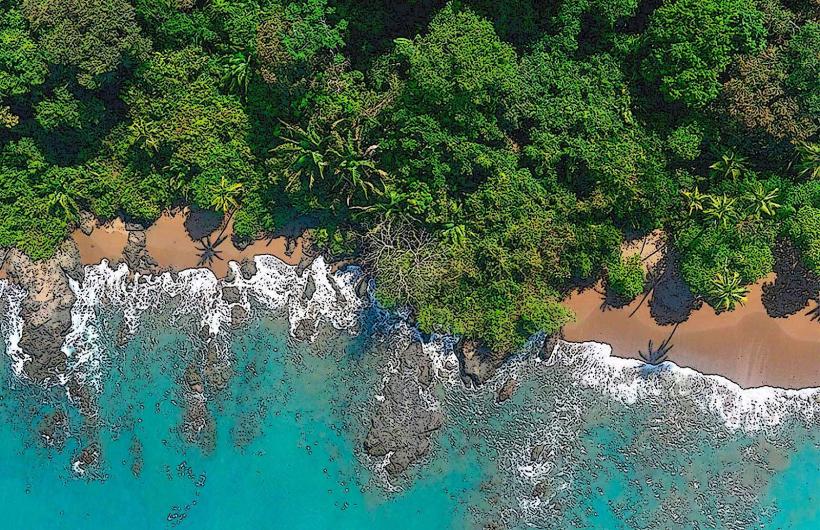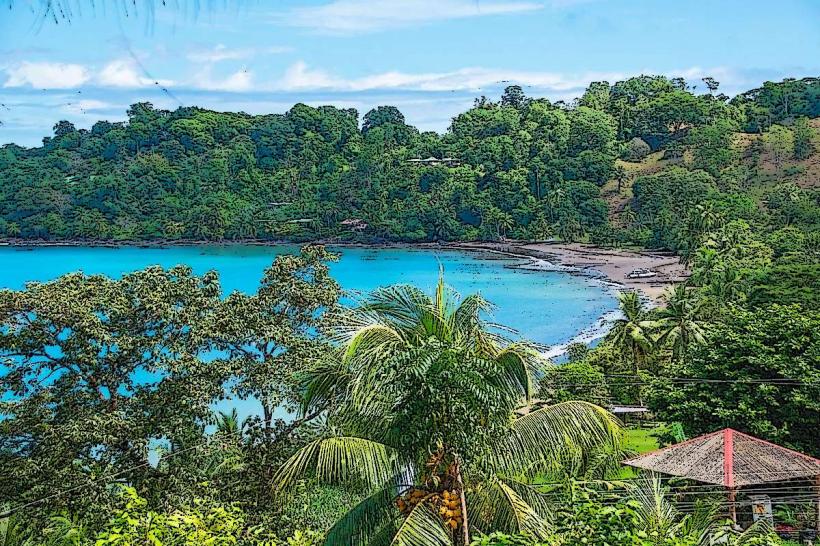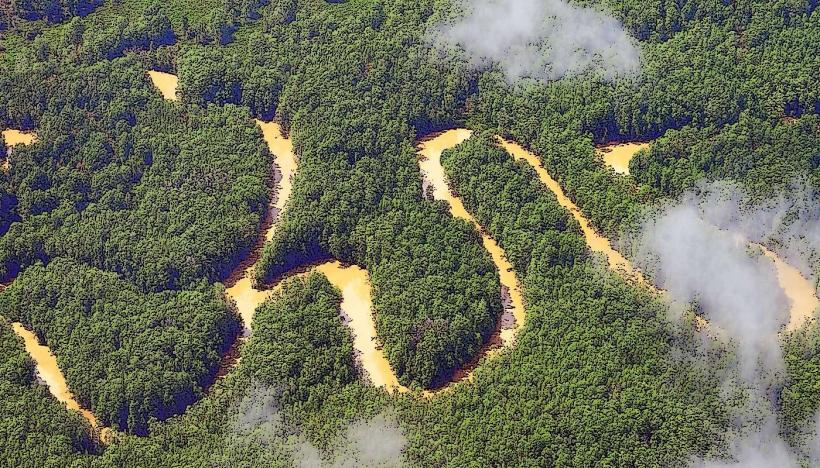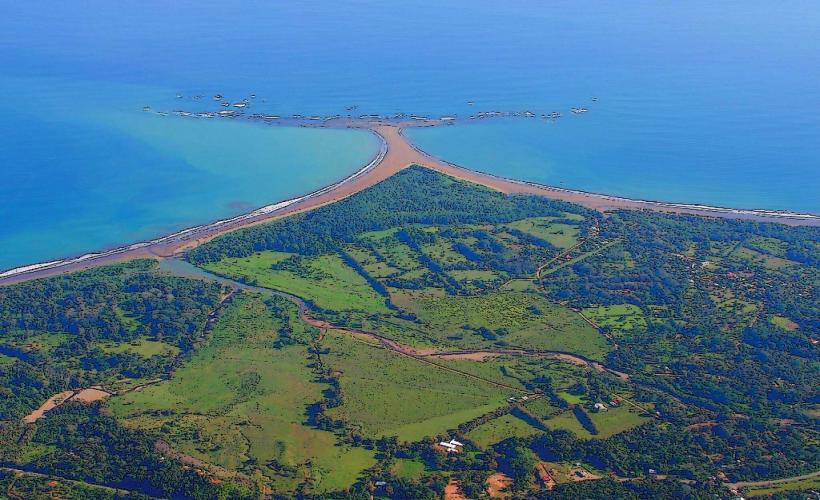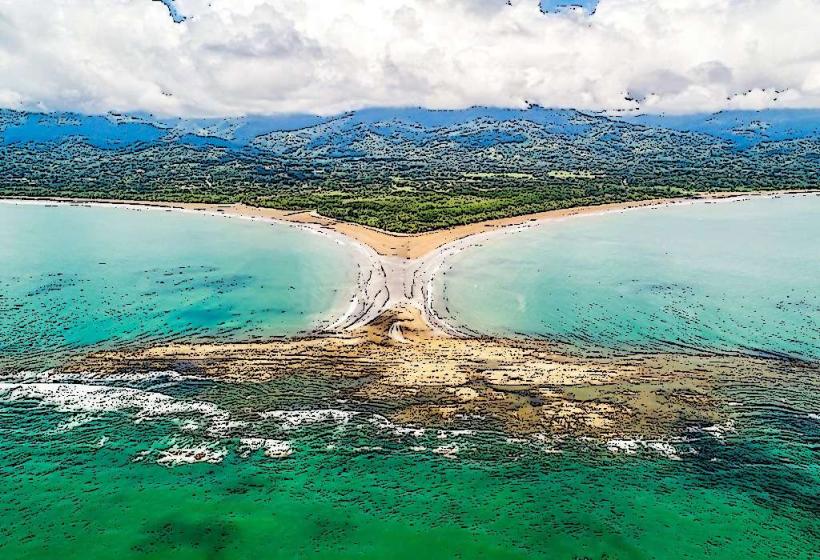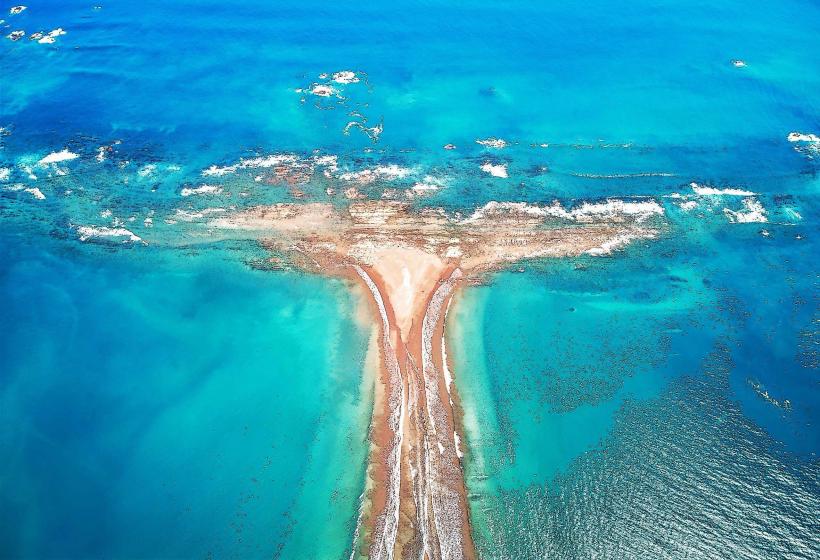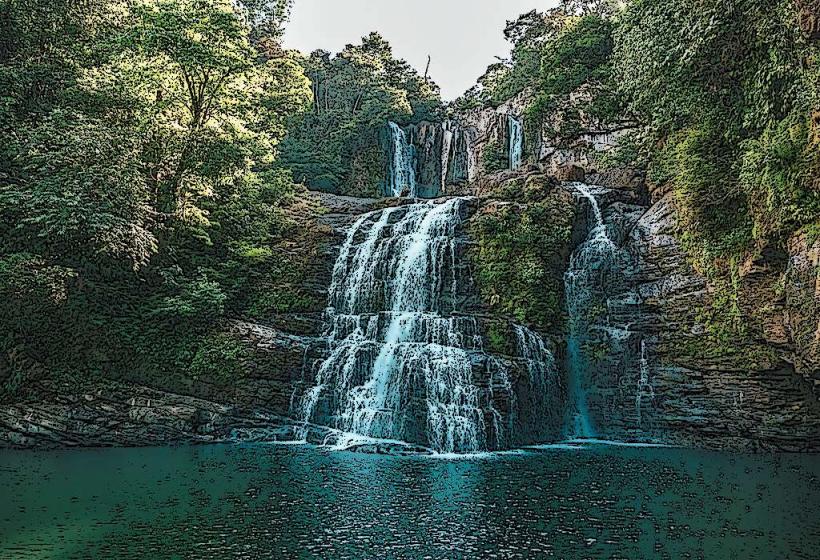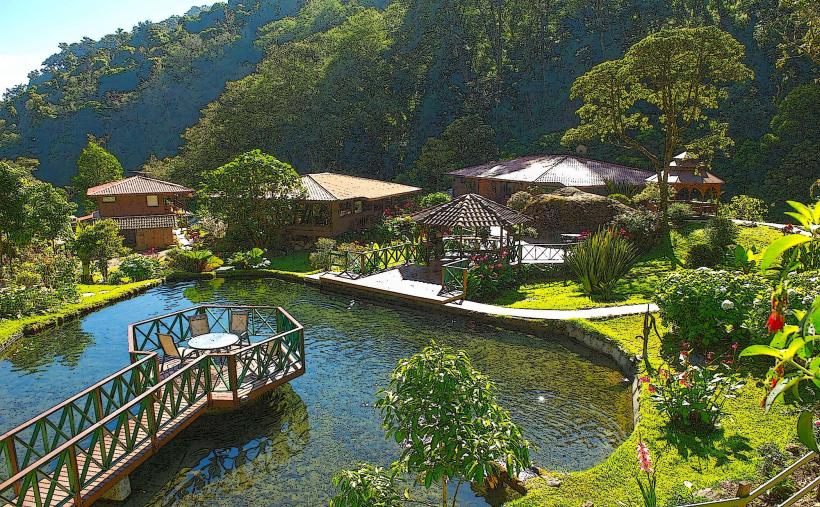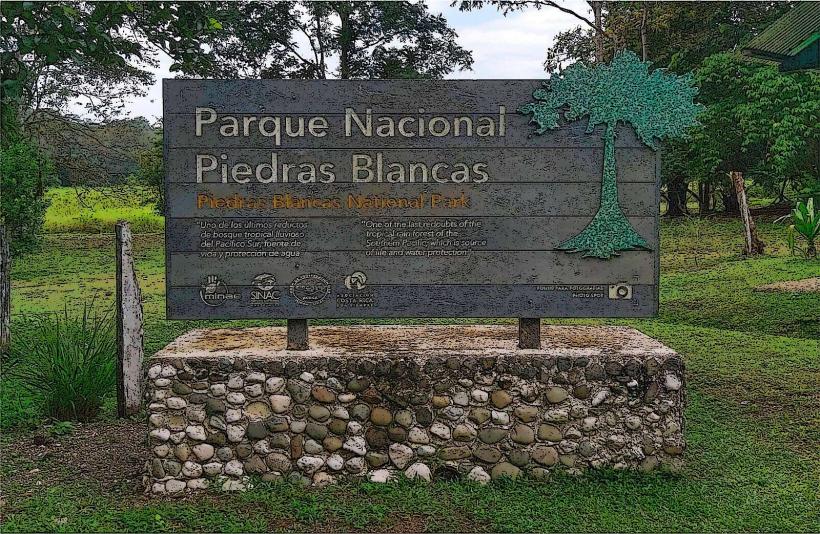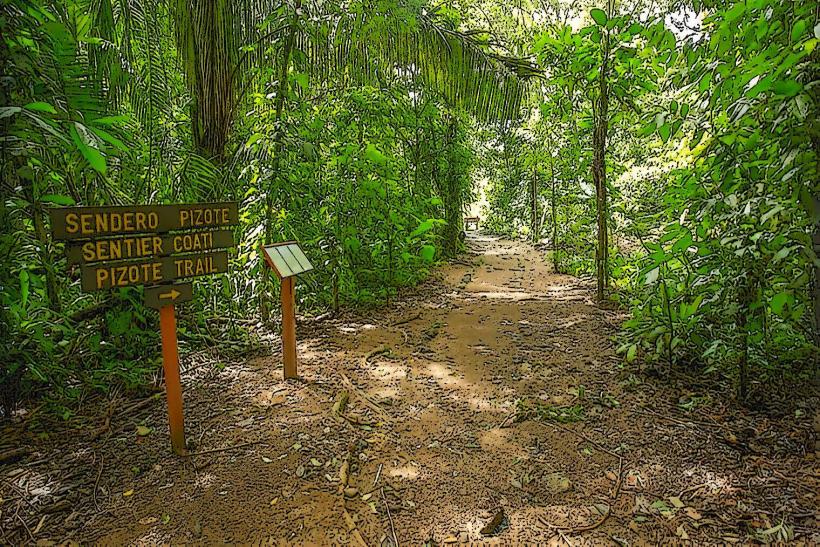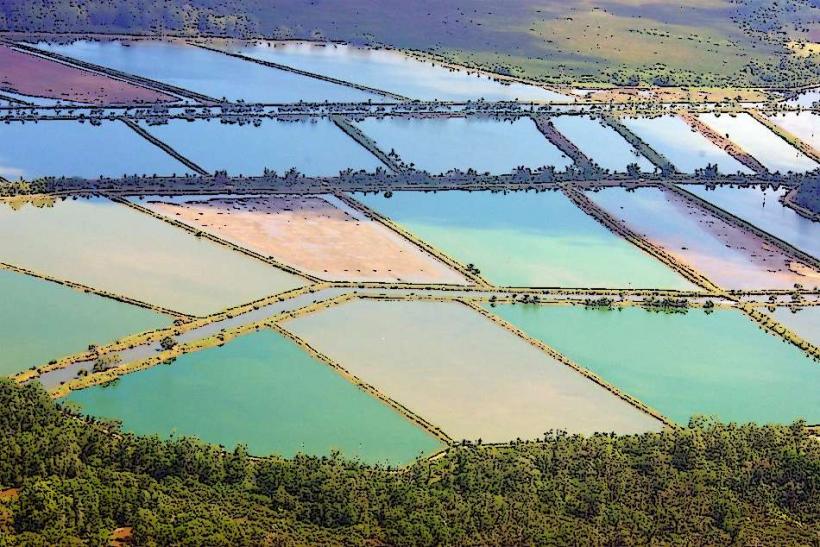Information
Landmark: Golfo DulceCity: Zona Sur
Country: Costa Rica
Continent: North America
Golfo Dulce (Sweet Gulf) is a large, crescent-shaped bay located along the southern Pacific coast of Costa Rica, bordered by the Osa Peninsula and the Térraba-Sierpe River. It is known for its stunning natural beauty, rich biodiversity, and tranquil waters. The gulf is surrounded by lush rainforests, mangrove forests, and pristine beaches, making it a haven for eco-tourism and nature enthusiasts. Golfo Dulce is one of the few tropical bays in the world that is still relatively untouched by large-scale development, maintaining a sense of isolation and serenity.
Geography and Location
- Location: Golfo Dulce is situated in the Puntarenas Province of Costa Rica, specifically on the southern Pacific coast, between the Osa Peninsula and the Térraba-Sierpe River. The gulf is bordered by the towns of Puerto Jiménez and Golfito on the east and west, respectively.
- Size: The gulf is around 30 kilometers (19 miles) in length and 10 kilometers (6 miles) at its widest point, making it one of the largest bays on Costa Rica's Pacific coast.
- Proximity to Corcovado National Park: Golfo Dulce is close to Corcovado National Park, a biodiverse hotspot, and offers easy access to the park for those interested in hiking and wildlife viewing.
Ecological Importance
Golfo Dulce is surrounded by a wide range of ecosystems, including rainforests, mangroves, coral reefs, and tropical beaches, which support an incredibly diverse array of flora and fauna.
Marine Life:
- The waters of Golfo Dulce are home to a variety of marine species, including dolphins, whales, manatees, and sea turtles. The gulf is particularly known for being one of the most important areas in Costa Rica for whale watching, especially for sightings of humpback whales, which migrate through the gulf twice a year (from December to April and again from August to October).
- The bay also has a healthy population of manta rays, stingrays, and sea turtles, which are frequently spotted while snorkeling or diving.
- Coral reefs can be found around the gulf's shores, hosting an abundance of marine life such as tropical fish, moray eels, and octopuses.
Wildlife on Land:
- The lush rainforests and mangrove ecosystems surrounding the gulf are rich in wildlife. Visitors may spot scarlet macaws, toucanets, howler monkeys, capuchin monkeys, and sloths while hiking or taking boat tours.
- The nearby Osa Peninsula is a part of the Corcovado National Park, one of the most biologically diverse places on Earth. The forests around Golfo Dulce act as important corridors for wildlife, connecting coastal habitats to the park.
Mangroves:
- The mangrove forests that line parts of Golfo Dulce provide critical habitat for a variety of species, including mangrove finches, crabs, and shrimp. These ecosystems are also vital for protecting the shoreline from erosion and providing natural filtration for the water.
Things to Do in Golfo Dulce
Whale and Dolphin Watching:
- Golfo Dulce is known for its whale watching opportunities, especially for humpback whales. The gulf serves as a migration route for these majestic creatures. Tour operators offer boat trips for spotting not only whales but also bottlenose dolphins, spinner dolphins, and orcas.
Snorkeling and Scuba Diving:
- The waters of Golfo Dulce offer excellent opportunities for snorkeling and scuba diving, with healthy coral reefs and abundant marine life. Popular dive sites include Isla del Caño (a short boat ride from the gulf), which is renowned for its crystal-clear waters, rich biodiversity, and large schools of fish.
Kayaking and Paddleboarding:
- Kayaking and stand-up paddleboarding are popular activities in Golfo Dulce. You can explore the calm, sheltered waters of the bay, paddle through the mangroves, or venture out toward nearby islands.
Fishing:
- The gulf is a prime location for sport fishing. Visitors can fish for a variety of species, including snapper, tarpon, snook, and marlin. Local fishing tours provide the chance to catch and release fish in the gulf’s abundant waters.
Hiking and Eco-Tourism:
- Golfo Dulce is surrounded by lush rainforests, and visitors can enjoy hiking and exploring the natural beauty of the region. There are several eco-lodges around the gulf that offer guided tours of nearby forests, waterfalls, and wildlife sanctuaries.
- A trip to Corcovado National Park is highly recommended for nature lovers. The park is a UNESCO Biosphere Reserve and offers extensive trails for hiking through some of the world’s most biodiverse rainforests.
Beach Relaxation:
- Golfo Dulce’s beaches are relatively undeveloped and provide a peaceful atmosphere for relaxation. Playa Zancudo and Playa Cacao are popular beach destinations in the area where visitors can unwind, swim, or stroll along the shore.
Birdwatching:
- With its diverse ecosystems, Golfo Dulce is a fantastic place for birdwatching. The area is home to numerous bird species, including scarlet macaws, herons, and kingfishers. Several guided birdwatching tours are available to help visitors spot these colorful species in the wild.
Accommodations
There are several eco-lodges and small hotels around Golfo Dulce, offering sustainable and immersive stays for nature enthusiasts. Accommodations range from rustic cabins to boutique hotels, and many of them offer activities such as boat tours, wildlife observation, and snorkeling trips. Golfito and Puerto Jiménez serve as the main towns where visitors can find more options for lodging, dining, and other services.
- Eco-lodges: Many eco-lodges are nestled in the surrounding forests and offer all-inclusive packages that include meals, guided tours, and transfers.
- Boutique Hotels: For those seeking more comfort, there are boutique hotels in and around Golfito and Puerto Jiménez, offering scenic views and convenient access to the bay and nearby attractions.
Access and Transportation
- By Car: Golfo Dulce is accessible by car from Puerto Jiménez, a popular entry point to the Osa Peninsula. The road from Puerto Jiménez to the gulf is paved, although it can be a bit bumpy in certain sections. Golfito is another town located at the opposite side of the gulf, accessible via a short boat ride.
- By Boat: Boats regularly travel between Puerto Jiménez, Golfito, and other towns around the gulf. Visitors can also take boat tours to explore the bay and surrounding mangroves.
- By Air: There are domestic flights to Puerto Jiménez from San José, with small regional airports in both Golfito and Puerto Jiménez.
Best Time to Visit
- The dry season (from December to April) is the best time to visit Golfo Dulce, offering sunny weather, calm waters, and the best opportunities for outdoor activities.
- The rainy season (from May to November) is characterized by heavy rainfall, but this period offers lush green landscapes and fewer tourists. Whale watching is also possible during the rainy season, as humpback whales migrate through the gulf.
Conclusion
Golfo Dulce is a stunning, unspoiled region of Costa Rica that offers a wide range of outdoor activities and natural wonders. From whale watching and scuba diving to hiking in lush rainforests and exploring remote beaches, there is something for every nature lover and adventure enthusiast. Its rich biodiversity, tranquil atmosphere, and eco-friendly tourism make it an ideal destination for those looking to experience Costa Rica’s pristine ecosystems and wildlife up close. Whether you’re visiting for the marine life, the birdwatching, or simply to relax in a secluded paradise, Golfo Dulce is a destination that promises a memorable and enriching experience.

